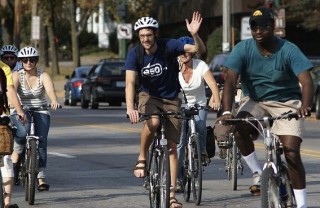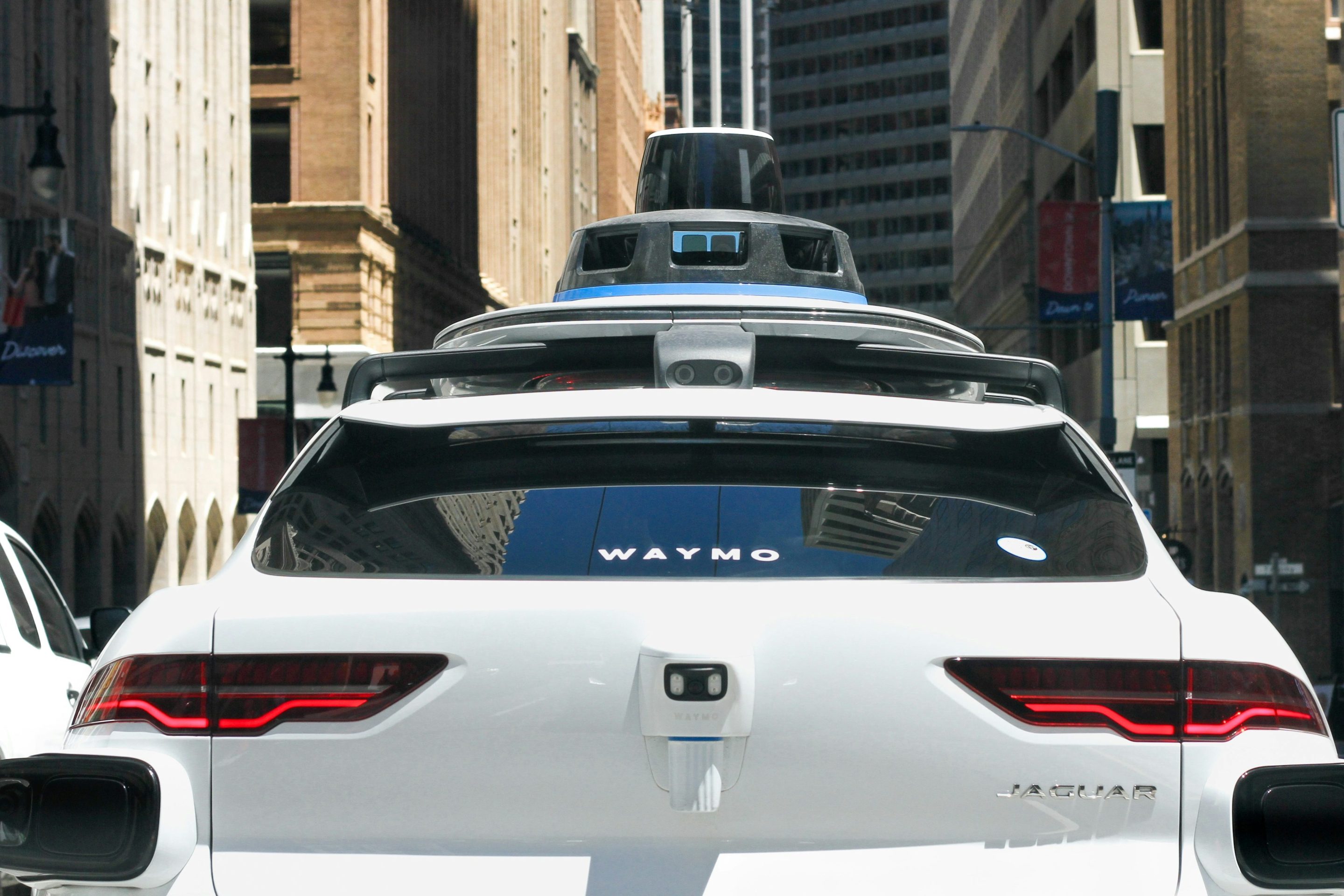Tony Dutzik is senior policy analyst with the Frontier Group, a think tank working on issues of the environment and democracy.
It’s college football bowl time. That once meant the renewal of age-old rivalries, and nowhere more so than in the Rose Bowl, which traditionally pitted the winner of Midwest-based Big 10 conference with the winner of the Pacific 8 (or 10, or 12).

Over the last decade, however, the Big 10 and Pac 12 have been waging another kind of competition -- for leadership in the integration of bicycling into campus life.
Back in November, the folks at the U.S. Department of Transportation who put out the useful Census Transportation Planning Products posted a list of the 30 counties and “places” that have experienced the greatest increases in commuting by bicycle, by foot, and by public transportation between the 2000 Census and the 2006-2010 American Community Survey.
College towns dominate the list of places with the greatest surge in bike commuting (see full list after the jump). Many college towns have long been bastions of bike travel, but the dramatic increase in bike commuting in many of those towns suggests that there is still room to grow, and that efforts to promote bicycling can make a difference. Many of the schools on the list of those with the greatest growth in bike commuting are also on the League of American Bicyclists’ list of “Bicycle Friendly Universities.”
Unfortunately, the Census Bureau only collects data on travel to work, which means that the figures below do not capture travel by students without jobs or those using bikes for recreational trips or errands. Still, the dramatic increase in bicycle travel in college towns is significant. It saves campuses the expense of building new roads and parking structures to accommodate vehicles for students and staff. It provides working students with a first taste of what bicycle commuting is like, creating the possibility that they will look for opportunities to continue to travel by bike post-graduation. And the presence of a bike-friendly campus in a city can create a foundation for making the entire community more accessible to bicycles.
As it turns out, the Big 10 and Pac 12 are co-winners of the Bike Bowl – each with five schools among the Top 30. But many other campuses, from the Ivy League to the SEC, are also represented. Take a look...
Number and Share of Total Commuters by Bike, 2006-2010, and Increase in Share since 2000 (Source: U.S. Department of Transportation)
Place Name | University | Bike Commuters | Percent Commuting by Bike, 2006-2010 | Bike Share Change: 2000 to 2006-10 |
Santa Cruz city, California | U. California-Santa Cruz | 2,391 | 8.4 | 4 |
Portland city, Oregon | Portland State U. | 15,871 | 5.4 | 3.6 |
Davis city, California | U. California-Davis | 5,319 | 17.6 | 3.2 |
Cambridge city, Massachusetts | Harvard, MIT, others | 3,868 | 6.8 | 2.9 |
Boulder city, Colorado | U. Colorado-Boulder | 4,950 | 9.8 | 2.9 |
Eugene city, Oregon | Univ. of Oregon | 5,769 | 8.2 | 2.6 |
Corvallis city, Oregon | Oregon State Univ. | 2,425 | 9.5 | 2.4 |
Fort Collins city, Colorado | Colorado State Univ. | 4,928 | 6.7 | 2.3 |
Boise City city, Idaho | Boise State Univ. | 3,963 | 3.7 | 2 |
Berkeley city, California | U. California-Berkeley | 3,858 | 7.5 | 1.9 |
Brookline CDP, Massachusetts | 1,135 | 3.6 | 1.8 | |
Minneapolis city, Minnesota | Univ. of Minnesota | 7,472 | 3.7 | 1.8 |
Somerville city, Massachusetts | Adjacent to Tufts Univ. | 2,152 | 4.6 | 1.8 |
Iowa City city, Iowa | Univ. of Iowa | 1,503 | 4.1 | 1.6 |
Bellingham city, Washington | Western Washington U. | 1,649 | 4.2 | 1.6 |
Mountain View city, California | 1,334 | 3.4 | 1.4 | |
La Crosse city, Wisconsin | U. Wisconsin-La Crosse | 657 | 2.5 | 1.4 |
Flagstaff city, Arizona | Northern Arizona U. | 1,700 | 5 | 1.3 |
Madison city, Wisconsin | Univ. of Wisconsin | 5,848 | 4.5 | 1.3 |
Ann Arbor city, Michigan | Univ. of Michigan | 1,936 | 3.5 | >1.2 |
Palo Alto city, California | Adjacent to Stanford U. | 1,998 | 6.8 | 1.2 |
New Haven city, Connecticut | Yale U. | 1,390 | 2.4 | 1.2 |
Westminster city, California | 675 | 1.7 | 1.1 | |
Elkhart city, Indiana | 316 | 1.5 | 1.1 | |
Auburn city, Alabama | Auburn U. | 422 | 1.9 | 1.1 |
Portland city, Maine | Univ. Southern Maine | 748 | 2.1 | 1 |
Encinitas city, California | 511 | 1.7 | 1 | |
San Francisco city, California | USF, UCSF, SFSU, others | 12,878 | 3 | 1 |
Evanston city, Illinois | Northwestern U. | 963 | 2.7 | 1 |
Waltham city, Massachusetts | Brandeis | 529 | 1.6 | 1 |





